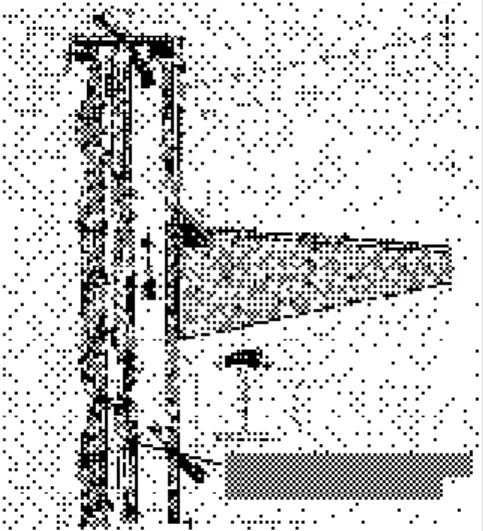Publisher’s version / Version de l'éditeur:
Columns - The Newsletter of the Alberta, Saskatchewan and Manitoba Associations of Architects, 5, June 4, pp. 4-5, 1998-06-01
READ THESE TERMS AND CONDITIONS CAREFULLY BEFORE USING THIS WEBSITE.
https://nrc-publications.canada.ca/eng/copyright
Vous avez des questions? Nous pouvons vous aider. Pour communiquer directement avec un auteur, consultez la première page de la revue dans laquelle son article a été publié afin de trouver ses coordonnées. Si vous n’arrivez pas à les repérer, communiquez avec nous à PublicationsArchive-ArchivesPublications@nrc-cnrc.gc.ca.
Questions? Contact the NRC Publications Archive team at
PublicationsArchive-ArchivesPublications@nrc-cnrc.gc.ca. If you wish to email the authors directly, please see the first page of the publication for their contact information.
NRC Publications Archive
Archives des publications du CNRC
This publication could be one of several versions: author’s original, accepted manuscript or the publisher’s version. / La version de cette publication peut être l’une des suivantes : la version prépublication de l’auteur, la version acceptée du manuscrit ou la version de l’éditeur.
Access and use of this website and the material on it are subject to the Terms and Conditions set forth at
Technical brief: air leakage paths through exterior walls
Rousseau, M. Z.
https://publications-cnrc.canada.ca/fra/droits
L’accès à ce site Web et l’utilisation de son contenu sont assujettis aux conditions présentées dans le site LISEZ CES CONDITIONS ATTENTIVEMENT AVANT D’UTILISER CE SITE WEB.
NRC Publications Record / Notice d'Archives des publications de CNRC: https://nrc-publications.canada.ca/eng/view/object/?id=b0c2f339-8e11-4634-b202-a5c0cc384562 https://publications-cnrc.canada.ca/fra/voir/objet/?id=b0c2f339-8e11-4634-b202-a5c0cc384562
Technical brief: air leakage paths through exterior
walls
Rousseau, M.Z.
A version of this paper is published in / Une version de ce document se trouve dans : Columns - The Newsletter of the Alberta, Saskatchewan and Manitoba
Association of Architects, v. 5, no. 4, June 1998, pp. 4-5
www.nrc.ca/irc/ircpubs
Technical Brief: Air Leakage Paths Through Exterior Walls
Which of the air exfiltration paths illustrated below lead to the greatest accumulation of
condensation on the interior face of the sheathing of an exterior wall (given that all other things are equal)?
Figure 1. Vertical wall sections of insulated wall cavities
Answer: The long and indirect air exfiltration paths, like paths 1 and 4.
As warm, humid air escapes through an exterior wall, heat transfer takes place between
this warm air and the “less warm” surfaces on its path. The parts of the sheathing that are
“licked” by this flow of warm (and humid) air will, therefore, be at a higher temperature
than the rest of the sheathing. The tendency is as follows:
• The shorter and more direct the air exfiltration path (paths 2 and 3), the closer the temperature of the material at the exit point will be to the air temperature at the point of entry into the cavity.
• The longer and more indirect the air exfiltration path, the less the material around the exit point will be warmed up by this warm air exfiltration.
Materials at the exit points in cavities 1 and 4 will be kept at a temperature below the dew point of the interior air for
longer periods in winter than those materials in cavities 2
and 3. That is why cavities 1 and 4 will show a greater accumulation of condensation in winter. How much greater will the accumulation be? Computer simulations (using the model TCCC2D developed by VTT in Finland
This IRC news item is based on an article by K.N. Burn entitled “Masonry Wall Systems,” DRB, NRC, Forum ’82: building science, 1983; available on the Internet at http://www.nrc.ca/
irc/bsi/82-2_E.html. To obtain a copy of the paper, phone IRC Client Services toll-free at 1 800 672-7990.
Information: Madeleine Z. Rousseau, IRC/NRC, Tel.: (613) 993-3938, Fax: (613) 954-3733,
and IRC) indicate that for a given winter season, long and indirect air exfiltration paths can cause three times more accumulation of condensation on the sheathing than short and direct paths. In the envelopes of existing buildings without effective air barriers, one can think of some long and indirect air leakage paths. Think, for example, of the insulated cavities in hollow masonry walls without effective air barrier systems (see Figure 2).
Figure 2 - Hollow masonry walls without an effective air barrier system
However, this does not mean that short and direct paths necessarily cause fewer problems. Air infiltration along a short, direct path, for example at a wall-window interface, considerably cools the interior surfaces, such as window frames, and causes surface condensation, besides making the adjacent interior spaces uncomfortable.
Obviously, we do not choose the air exfiltration paths in a building envelope: they are generally accidental and uncontrolled. What we must do is minimize air flow
through the envelope walls with an air barrier system. This is a critical component in an overall approach aimed at achieving both a high-quality indoor environment and envelope durability.

